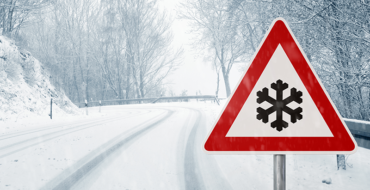Wheels and tires take a lot of wear and tear on the road. As easy as it may be to remember oil changes and filling your gas tank, you may forget that your wheels and tires require maintenance, too. Without properly balanced tires and aligned wheels, your car won’t handle as well as you’d like it to. Let’s go over the differences between a tire balance and a wheel alignment to help you figure out which one you may need.
Tire Balance vs. Wheel Alignment: Which One Do You Need?

What Is a Tire Balance?
Tire balancing, also known as wheel balancing, is the correction of an uneven distribution of weight in a car’s tires. The two most common types of tire imbalance that need correction are static (single plane), which addresses vertical movement, and dynamic (dual plane), which includes both vertical and lateral movement.
Properly balanced wheels will improve traction, steering control, and extend tire life.
How It’s Done
To start, your car’s tires will be adjusted to the optimal inflation. Each wheel and tire will then be mounted onto a tire balancing machine. The machine will spin the tire and wheel assembly to measure the imbalance. A technician will use this measurement to gauge how much weight needs to be added to each tire. Tiny weights will be attached to the wheels to balance the wheel assembly out.
How Often to Get One
Most vehicles will need a tire balance once or twice per year. Always get your wheels balanced when you switch from winter tires to summer tires.
Your owner’s manual will list how often your specific vehicle will need a tire balance.
Signs You Need One
Some signs that your car needs a tire balance include:
- vibrations in the steering floor, floor, or seats (especially at high speeds)
- scalloped or cupped wear patterns on tires
- vehicle pulling to one side
What Is a Wheel Alignment?
A wheel alignment is an adjustment of a vehicle’s suspension to change the angles of the tires, influencing how they contact the road. A properly aligned suspension will help your tires last longer, improve vehicle handling, give you a smoother ride, and will stop your car from pulling to one side of the road.
How It’s Done
After raising the vehicle off the ground, a mechanic will use an alignment machine to assess the angle of each wheel. If the wheels are facing different directions, your tires are basically scuffing the road as you drive, causing faster tire wear, an off-centre steering wheel, and decreased fuel economy.
The technician will use the measurements provided by the alignment machine to adjust the camber, caster, and toe of each wheel as needed.
If your vehicle uses front-wheel drive, you can try to do a wheel alignment yourself by following these steps. DIY wheel alignments should only be attempted by those with a lot of automotive maintenance experience. Otherwise, leave this task to a professional mechanic.
How Often to Get One
Wheel alignments are recommended at least once per year. Some manufacturers advise getting a wheel alignment every time you go for an oil change. Getting a wheel alignment is also recommended whenever you change your tires based on the season.
Check your owner’s manual for the best estimate of when to get your wheels aligned.
Signs You Need One
Some signs you may need a wheel alignment include:
- noisy steering wheel
- steering wheel feels off-centre
- vehicle pulling to one side
- squealing tires
- uneven tire wear
Some of these signs may be confused with tire imbalance symptoms. To know which service you need, have a professional mechanic assess your wheels and tires.
Pay attention to how your vehicle performs whenever you’re out on the road. If you notice something out of the ordinary, investigate the issue or have a professional take over. Brushing off what seems like a small problem can have big consequences down the line, so don’t ignore the signs your car gives off.
To do your own diagnostics and minor wheel and tire repairs from home, keep tools like these in your garage:
Wheel & Tire Maintenance
Wheel alignments and tire balances and are often done at the same time. You can have both services completed at any NAPA AUTOPRO service centre.
Keep up with your tire maintenance by checking the air pressure in each tire with a pressure gauge every month. Do a visual inspection as you check the air pressure to look for excessive wear or punctures. In case you need to repair a tire while on the road, keep a portable tire repair kit in your trunk.
For any questions about tire balances and wheel alignments, visit a NAPA Auto Parts store to ask an expert.





